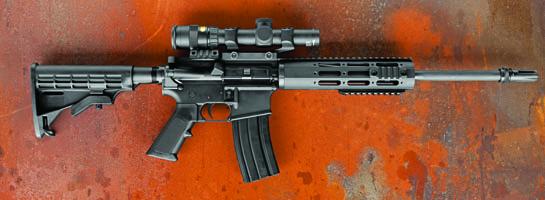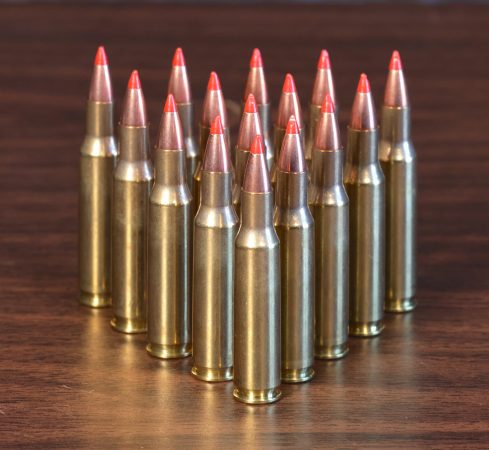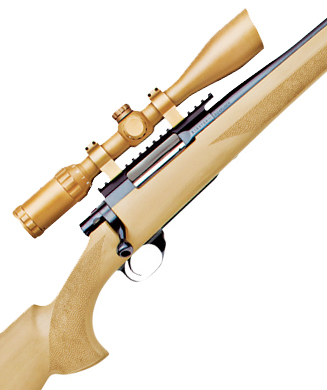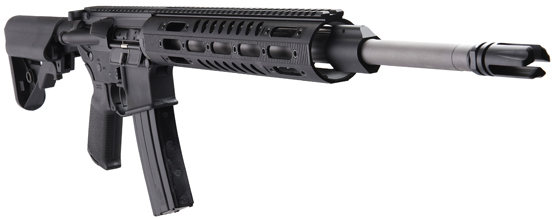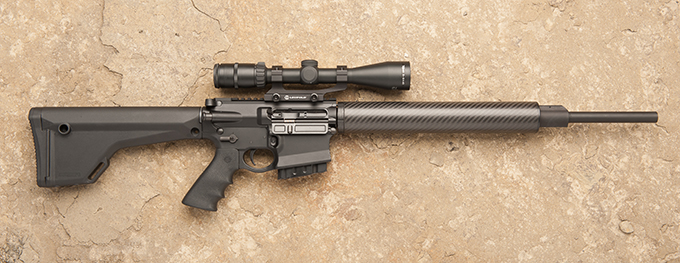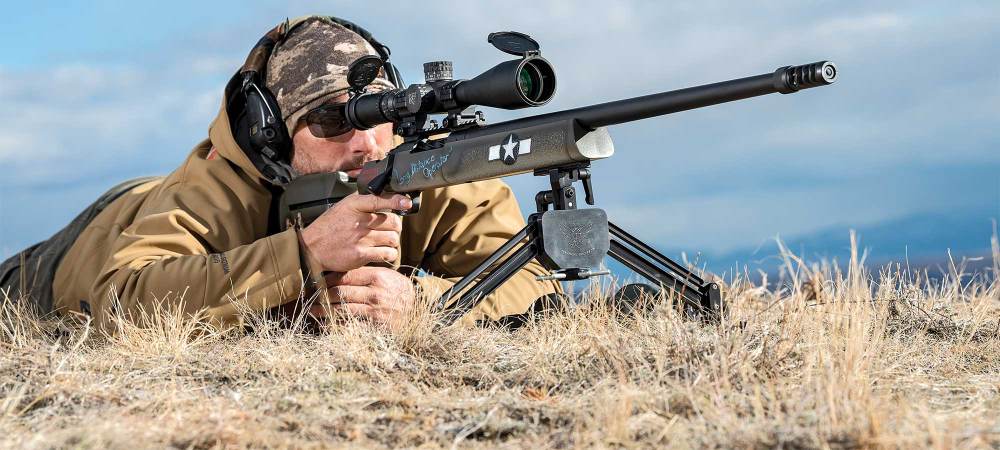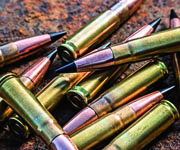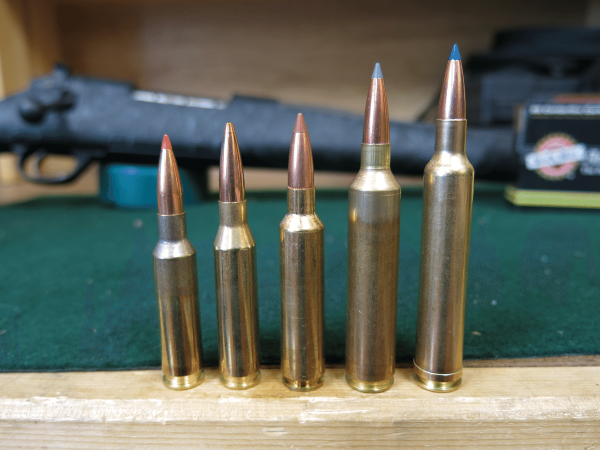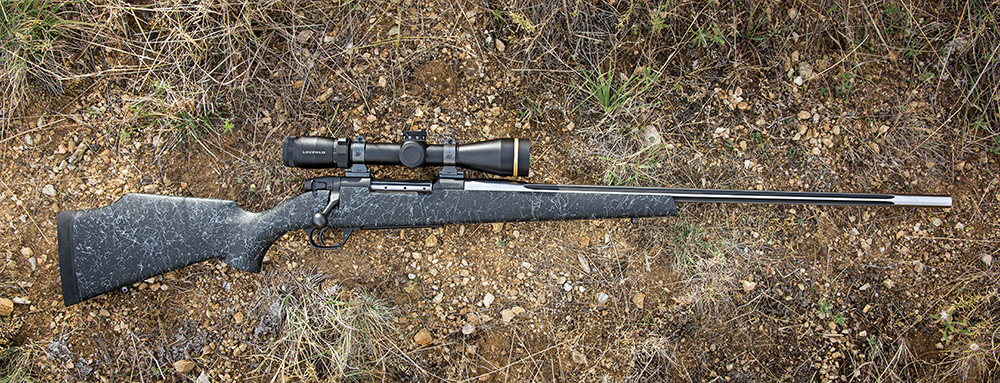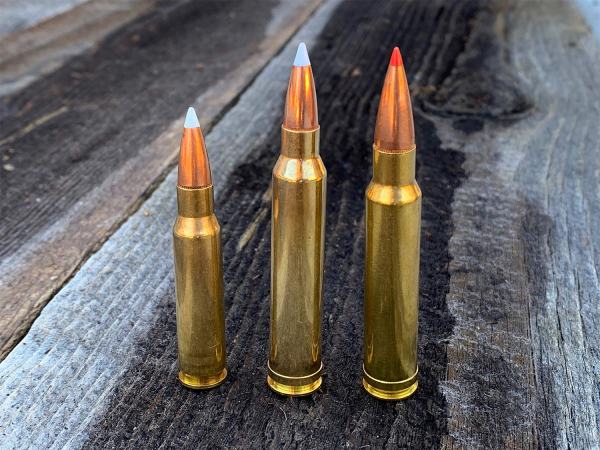We may earn revenue from the products available on this page and participate in affiliate programs. Learn More ›
The 300 AAC Blackout is an interesting little cartridge. It is a .30-caliber round designed to feed through AR-15-size rifles and magazines. It was originally developed for the military–the justification being that it has better terminal ballistics than the 5.56 NATO and is superior in design to the 7.62×39, at least with respect to the AR platform, while equaling the classic AK-47 round’s performance. Though, like any new round, it has generated considerable interest among sportsmen, who are using it on deer, hogs, and other game.
But it has also caused some confusion among shooters. How does the 300 BLK (as it is also known), which debuted in 2011, differ from the 300 Whisper, created by J.D. Jones back in 1992? (The answer: It doesn’t really, except for minor dimensional differences.) And how compatible are the two flavors of loads being offered in the 300 AAC Blackout–the supersonic cartridges that use bullets weighing from 110 to 150 grains and the subsonic loads that employ much heavier bullets, weighing 208 grains and more?
Against this backdrop, DPMS has introduced this new rifle.
Flexible Design
The rifle, which operates on a direct-impingement system, comes with a 16-inch barrel, a six-position adjustable stock, a flat-top receiver with a Picatinny rail, and DPMS’s new free-float modular hand guard, which offers an appealing degree of flexibility when configuring the rifle. At $1,199, the rifle is competitively priced.
Twisted Up
Because the 300 BLK employs such a broad range of bullet weights, gunmakers have struggled to find an optimal barrel twist that will yield satisfactory results with all loads. Heavier bullets require faster twist rates in order to stabilize and shoot accurately, but imparting too much spin to a bullet can cause accuracy problems with lighter bullets. This has given gunmakers fits and prompted one rifle maker to abandon the 300 BLK altogether.
DPMS settled on a brisk 1-in-7-inch twist, which in theory should favor the heavier subsonic loads. But that wasn’t reflected at the range; the supersonic loads shot quite well, while the subsonic offerings had difficulty.
I put five loads through the DPMS during the evaluation, chronographing their speeds. The rifle showed a preference for two in particular: Remington’s 125-grain OTM (2,252 fps) and Hornady’s 110-grain A-Max (2,384 fps), which is chambered in 300 Whisper. The A-Max delivered sub-MOA accuracy, printing the smallest group of the test–a .874-inch five-shot group. The accuracy of this load (and the others, for that matter) would certainly have been better if the rifle were equipped with a better trigger. The factory trigger on my sample was rough, with a fair amount of creep, and broke at 6 pounds 6 ounces. An aftermarket trigger would be a wise investment.
The average group size for the Remington 125-grain OTM was 1.435 inches, while the Remington 115-grain CTFB’s groups (2,334 fps) opened up to 2.813 inches. Between the two subsonic loads, Hornady’s 208-grain A-Max (882 fps) averaged 3.030-inch groups, whereas Remington’s 220-grain load (885 fps) had trouble holding dinner-plate-size patterns.
Suppressor-Ready
The rifle comes with an Advanced Armament Corp. muzzle brake that is also a suppressor adaptor. In the past, I’ve shot this round with a silencer using subsonic ammo, and that combo really shines. A rifle so equipped is quiet, and the cartridge has negligible recoil. I didn’t have a can for the DPMS, and when I used the subsonic ammo, the rifle ejected the brass empties but wasn’t able to cycle in a new round. Perhaps future versions of the rifle will have an adjustable gas block to fix this issue. If it had a can, it’s likely that the rifle would have worked fine. But lacking the extra back pressure a suppressor generates, the action wasn’t able to run the subsonic loads.
So where does that leave this rifle? The faster loads, which will be more effective for hunters, worked well, making this round a viable option for close shots (200 yards or less) on big game and varmints.
With this in mind, the DPMS 300 AAC is well suited for hunting at moderate ranges and has the flexibility to be configured for competition and self-defense.
Stats
Caliber: 300 BLK
Capacity: 30
Weight: 7 lb. 1 oz.
Stock: Adj. 6-position LOP
Barrel Length: 16 in.
Overall Length: 33 in. to 36.75
Rate of Twist: 1-in-7 in.
Trigger Pull: 6 lb. 6 oz.
MSRP: $1,199
Report Card
Overall: ** 1/2
Performance: B-
Design: B-
Price/Value: C
Verdict:
The DPMS 300 AAC is a fine rifle for the moderately powered 300 BLK round and can be used for hunting within reasonable range, for competition, and for personal protection.

